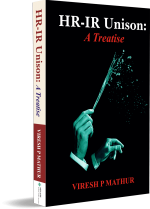India in modern times, broadly understood as the 18th, 19th, and 20th centuries, and beyond, has been a geopolitical mass of tremendous significance. The 18thcentury saw the colonial powers struggling with each other and with the local powers, to establish their dominance in the sub-continent. The English began in the Ganga Delta moving upwards through Ganga. The French began in the south via Pondicherry, and the Portuguese, after an early start, kept pushing the boundaries of territorial dominance around Goa. The rest, as they say, is history.
That the English succeeded more than other colonial powers was as much about the entrepreneurial spirit of the race as it was about not getting mixed up with the socio-religious sensitivities of the local population. The Portuguese kept pushing for conversions and was succeeded to certain extent whereas the English (with the East India Company being their economic and administrative face) was happy even to serve as the dry nurse to God Vishnu, Thus they fulfilled the roles which the past rulers had, say in some of the temples of what is today, a version of the then East Bengal.
The operational roll out was significant to the extent that the French exchanged some influence in the territories on the Tamil coastline for giving up their claims in Bengal region, the Dutch confined their influence to the south east island archipelago The local rulers were so busy fighting each other that they were not able to face the technological might of the European powers.
There were occasions when, given the global contest for empires effected key decisions. Typically, the French gave up some advantage in India to the English to gain leverage on the eastern coast of North America. Indian territories had become a part and parcel of exchanges of land and influence contests around the globe.
The Indian sub-continent was important and so it remained even after the English East India Company surrendered power to the British Crown. In 1857, the trading company from India was wound up to yield power to the British Crown working through the British Parliament. The period between 1857 and 1947 witnessed one of the most un-abashed economic exploitations of a colonial region by the dominant colonial powers. The shame of that period has progressively gained attention, but the sensitive analysis of the same, not the compensation, is still a matter of incomplete research. By the same token, a very poor understanding of the brazenness of exploitation and what it did to the Indian economy, remains to be appreciated in its fullness. The ‘Permanent Settlement’ of the Bengal Presidency led to the ruins of many lands of economic production. The history of the Bombay presidency, also referred to as the ‘Western Presidency’, was substantially different. Be that as it may, India remained the source of much of the might of the British imperial muscles, while Indian goods, silver, and more add to the wealth of the island referred to as the United Kingdom.
The Indian soldiers fought for and protected the British empire through World War-I and II, and more. What they got in return was an arch on what is now called the ‘Karthavya Path.’ The arch of stone has names of Indian soldiers etched on it in a manner in which a few can decipher, but that’s another story.
Many of the Indian elite so identified with the British form pomp and glory that they became more British in mannerism than say, the British themselves. The rich intellectual tradition of the Indian sub-continent got labelled as the ‘Hindu tradition’. The labelling may have been technically correct because much of the Indian tradition was subscribed to by the followers of Hinduism. But practically it did a great dis-service because a common heritage got labelled as a sectarian heritage. The ripples of that strong belief, on the surface, are still making the waves.
In Israel, ethnic Jews from all parts of the world acknowledge a common heritage of Judaism. In India, the cultural identity of a universal character got labelled in a sectarian manner and was mischievously pitted against, say, Islamic heritage or a so-called post-modern Christian heritage.
These historical constructs, even though mischievously and ingenuously perpetrated, are not easy to undo.
It will take a long time for a general appreciation to emerge that intellectual traditions have a lineal heritage and that there is no competitiveness, segmentation and paganism amongst the intellectual traditions of a land.
Once this is achieved, the Indian century would have truly begun.





























Add comment